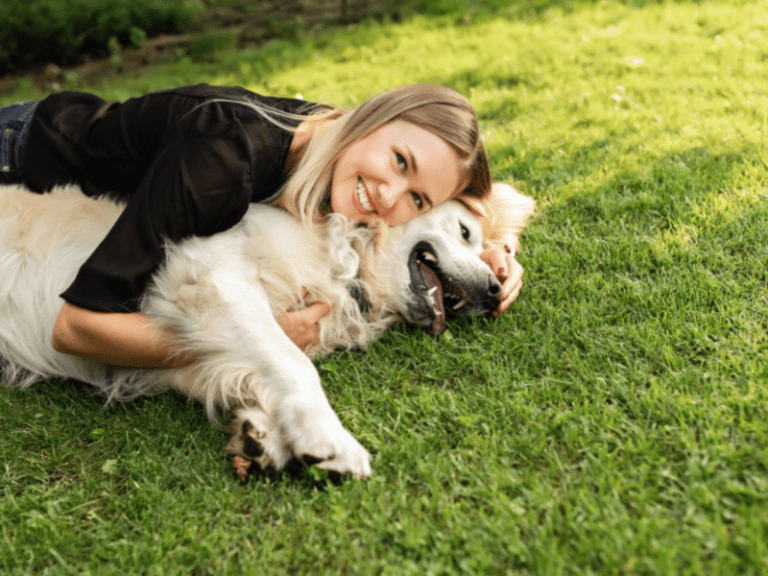What To Do When Your Dog Will Not Eat
FULL DISCLOSURE: The links I share in this course ARE my affiliate links. This means I earn a commission, at no extra cost to you. In fact, sometimes you’ll get a discount or free credits just FOR using my link. 🙂
Is your dog refusing to eat their food?
If so, you are not alone.
Some dogs are picky eaters, while others may refuse to eat for a variety of reasons. In this blog post, we will discuss some of the most common reasons dogs will not eat and what you can do about it.
So if your dog is turning his nose at this food, keep reading!
Lost Appetite
It can be worrying when your dog will not eat, especially if they have always been a hearty eater. However, there are a few possible reasons why your dog may have lost their appetite.
If your dog has suddenly stopped eating, the first thing you should do is check with your veterinarian to rule out any medical causes. Once any underlying health issues have been ruled out, there are a few things you can try to get your dog’s appetite back.
Some dogs may be finicky eaters and will only eat certain types of food. In this can, it may be helpful to try a different brand or flavor of food.
You can also try breaking their food into smaller pieces or adding some wet food to their dry food.
Some dogs may also stop eating if they are anxious or stressed. If this is the case, try to create a calm environment and give them extra attention and affection.
Reasons Why Your Dog May Not Eat

Let’s check out some reasons that your dog may not be eating.
Sick
Another reason why dogs may not eat is that they are sick. If your dog has been vomiting or has diarrhea, he may not want to eat because he is not feeling well. In this case, you will need to take him to the veterinarian to get him checked out.
Anxiety or Stress

Some dogs may refuse to eat because they are anxious or stressed. This is particularly common in dogs who are new to a home or who have just been adopted. If your dog is stressed, you can try to relax him by providing a calm environment and plenty of positive reinforcement.
Another trick I do with my dog is to put him in a room by himself when he eats. He gets nervous around other dogs and feels much more comfortable when he is by himself.
When he still refuses to eat because he hears others outside the door. I will often sit down on the floor with him and pet him while he is eating his food. This helps to calm him down and ensures him that he is safe. While this may not work with all dogs, it definitely works with mine.
Fresh Food
It may be possible that their food is not fresh. Dogs are creatures of habit and will often refuse to eat if their food is not fresh.
If this is the case, try rotating your dog’s food every few days to ensure they always get fresh food. You can also try feeding them smaller meals more often throughout the day instead of one large meal left out.
Dogs often know when food has gone bad- such as if you leave out a cooked carrot and it starts to mold. Try giving your dog new food on a daily basis so that it is safe for them to eat.
Giving Too Many Treats
Your dog may be getting too many treats, making them not want to eat their regular food.
Dogs can get spoiled if given too many treats, which can cause them to lose their appetite for regular food.
If your dog is getting more than a few treats per day, try cutting back on the number of treats you are giving them and see if that helps.
You may also want to try switching up the types of treats you are giving them so that they do not get bored of the same thing.
Boredom
Your dog may not be eating because they are bored with their food. Dogs can get bored of their food just like humans can, and when this happens, they may not be as inclined to eat.
One way to prevent your dog from getting bored of their food is to mix up their diet occasionally. Try feeding them a different type of food or mixing some wet food with their dry food.
You can also try hiding some of their food around the house so that they have to search for it. This will keep them entertained and help them to stay interested in their food.
Another idea to help curve boredom is to purchase a puzzle toy. These toys require your dog to figure out how to get to their food, which can be a fun challenge for them. There are a variety of different puzzle toys available, so you can find one that best suits your dog’s personality and interests.
New Schedule
If your dog is refusing to eat their food, one possible reason may be that they are not used to the new schedule. Dogs are creatures of habit, and if their routine is changed, they may not know how to respond.
In this case, you may want to try changing their feeding schedule until they get used to it. Start by feeding them at the same time each day and gradually move the time earlier or later until they are eating at the desired time.
You can also try feeding them smaller meals more often throughout the day instead of one large meal.
Throwing Up
If your dog is throwing up after eating, you can do a few things to help.
First, make sure that your dog is getting enough water. Dehydration can cause dogs to throw up, so it is important to ensure they drink enough fluids.
If your dog is regularly eating and is not dehydrated, then there may be something wrong with their food.
Dogs can be very particular about what they will and will not eat, so it is possible that your dog simply does not like the food you are feeding them. In this case, you may want to try switching to a different food or mix some of their old food in with the new food to make it more appetizing.
If your dog continues to throw up after eating, it is important to take them to the veterinarian for a check-up. There may be an underlying medical condition causing them to vomit, and it is important to get treated as soon as possible.
Dental Problems

If your dog is refusing to eat, it may be because of dental problems. Dental problems can make it difficult or painful for dogs to eat so that they may avoid their food altogether.
If your dog is having trouble eating, be sure to take them to the vet for a check-up. The vet can quickly diagnose a dental problem and help your dog get feeling better.
Poor Digestion
Any pet owner knows that a healthy diet is essential for their furry friend. But sometimes, even the best-quality food can be hard for your dog to digest, leading to vomiting or an upset stomach.
That's where Because, Animals. comes in. Their omega and probiotic supplement is designed to help your dog digest their food more easily. Simply sprinkle it over their food at mealtime, and you'll notice a difference in their energy levels and overall health.
Plus, the supplement is completely natural and contains no artificial ingredients. So you can feel good about giving it to your beloved pet. Whether your dog is having trouble digesting their food or you simply want to give them a boost of omega-3 fatty acids, Because, Animals. has you covered.
Picky Eater
One of the most common reasons why dogs will not eat is because they are picky eaters. Some dogs simply have a preference for certain foods, while others may be hesitant to try new foods. If your dog is a picky eater, you may need to experiment with different types of food until you find one that he will eat.
What to Add To Your Dog’s Food
Thankfully, there are many options for what to feed your dog when it is starving.
Tami Pierce, an assistant clinical professor at the University of California, Davis, suggests adding low-sodium broth, cooked boneless chicken, or cooked hamburger to his food.
Beware of habit-forming feedings and limit his portions. Rather than offering him dry food, mix in wet canned food. And if you must, cut back on the extras.
Another option to help get your dog to eat is to mix in some canned pumpkin. Pumpkin is packed with vitamins and miners, and it can help to settle an upset stomach.
You can also try adding a little bit of peanut butter or yogurt to your dog’s food.
Both of these foods are high in protein and may make eating their food more of a rewarding experience.
Talking to your veterinarian is a great way to learn what to feed your dog. They will be able to recommend a food that is tailored to your dog’s specific needs.
Changing Your Dog’s Food
Your dog may not be eating because they do not like the food they are being given. If this is the case, you can try giving them a different kind of dry dog food.
When changing your dog’s food, it is important to do so gradually. Sudden changes in diet can cause digestive upset and may even lead to your dog becoming picky about eating.
Start by mixing a small amount of new food in with the old. Over the course of a week or so, gradually increase the portion of new food until your dog is eating only the new diet.
If at any point your dog refuses to eat or appears to be having stomach trouble, stop the transition and consult your veterinarian.
When you do this, there is a trick to help eliminate upset stomachs and prevent diarrhea.
Give their food to them in the following way:
| Day | Percent of Old Food | Percent of New Food |
| Day 1 | 75% | 25% |
| Day 2 | 70% | 30% |
| Day 3 | 60% | 50% |
| Day 5 | 40% | 60% |
| Day 6 | 25% | 75% |
| Day 7 | 100% | 0% |
Conclusion
Have you ever gone through a period when your dog refuses to eat?
It can be incredibly frustrating when your furry friend seems to be turning their nose up at every meal.
Before you panic, take a step back and try to figure out the root of the problem.
There are many potential causes for canine refusal to eat, from being picky eaters to dental problems.
Once you have determined the cause, it will be easier to find a solution.
Has your dog ever refused to eat? What was the cause? Let us know in the comments below.







